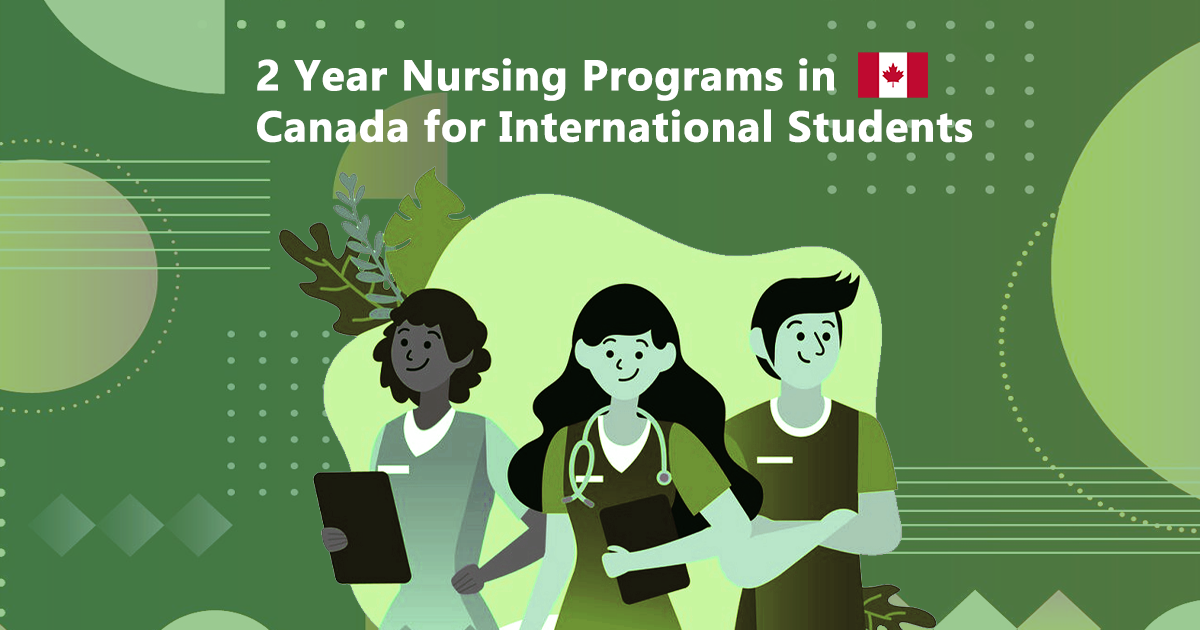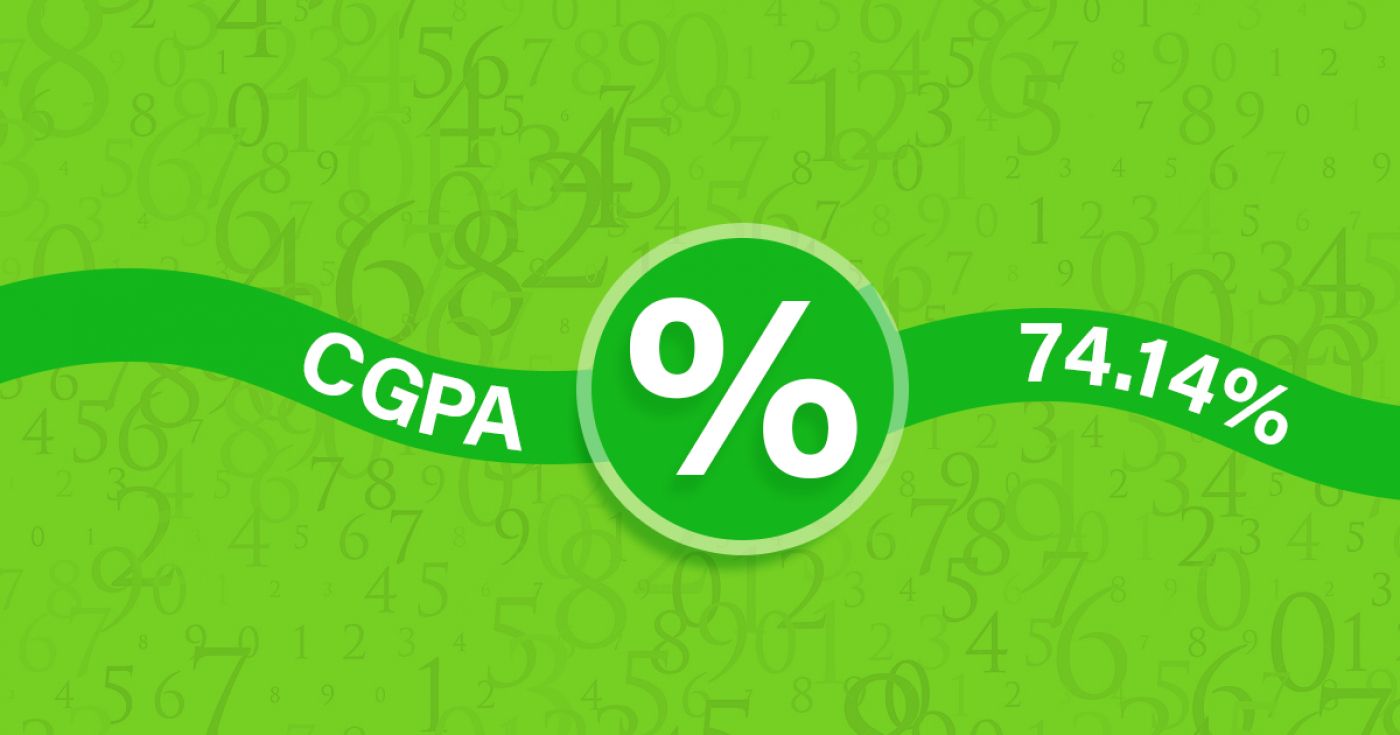Diploma in Culinary Management
at Humber College North Campus Canada
Overview
Humber’s Culinary Management diploma program teaches you the skills you need to excel as a chef in the culinary industry. Work in the world’s finest dining establishments, and take advantage of international study opportunities. Kick your career up a notch by competing in on-campus, national and international skill competitions.
This program will also prepare you to to design, organize, implement, serve and execute your own dinner event in the “Chef's Table” course. Using a market-related themed menu, mise en place and à la carte cooking, students will showcase classical and contemporary techniques and skill. The Charcuterie and Advanced Garde Manger courses involve students using contemporary level food presentation, styling techniques and becoming proficient with various butchery processes on a wide range of meats. The Emerging Trends course is unique among Ontario colleges, providing students with the opportunity to work alongside local guest chefs. Students also have the opportunity to experience preparing meals on the Humber Food Truck, Humber’s classroom on wheels. In addition, students work alongside some of the country’s best chefs. Students receive unmatched time spent with several leading chefs about what’s happening in today’s restaurant scene and food industry.
Note: A fast-track program is implemented for the January start. The first semester (January to April) is immediately followed by the second semester (May to August), resulting in a short summer break. The third semester begins in September, allowing students to complete the two-year program in just 16 months.
Qualified students will complete work placements in the kitchen of a leading hotel, restaurant or golf course of their choice for seven unpaid weeks in the fourth semester (40 hours per week). Students are also able to apply for placements across Canada and internationally, which has jumpstarted many successful careers.
The demand for passionate, well-trained chefs around the world is constant, and with more than 7,000 restaurants reflecting a wide variety of cultures and cuisines, Toronto is the ideal place to launch your culinary career. The creative culinary and management skills you’ll gain at Humber will put you in high demand in hotels, restaurants, golf clubs, resorts, hospitals, corporate settings and more. If you have an entrepreneurial spirit, you’ll be inspired by the potential to start your own business in the future. Food service is a constantly evolving industry that has never been more in the spotlight, and culinary management at Humber is your gateway.
30
Application Processing Days
Under Graduate
Program Level
Fact & Figures
Full Time On Campus
Study Mode
24
Duration
Humber College North Campus
Location
Diploma in Culinary Management Assistant Fee
$16394
Tuition Fee
$12000
Average Cost of Living
$75
Application Fee
Diploma in Culinary Management Admissions Requirements
- Minimum Level of Education Required: To be accepted into this program, applicants must have Grade 12 / High School Diploma or equivalent including these required courses:
- Grade 12 English (ENG4C or ENG4U or equivalent)
- Three Grade 11 or Grade 12 C, M or U courses in addition to those listed above

Get superfast admissions at top Diploma in Culinary Management institutes in 2024
Benefits of choosing
➤Admission’s guaranteed at Top institutes across the world.
➤Enjoy exclusive application fee waiver’s with Edmissions.
➤Unlimited FREE Counselling sessions with Edmission’s
Experts
➤Get Tips from industry veterans to crack the IELTS exam in 1
week.
➤Assistance with scholarships, loans, forex, student accommodation and visa guidance.
Work Permit Canada
Students who wish to work in Canada require a work permit to do so. A student in Canada can work part-time during the course of his studies and full-time during holidays and semester breaks and post the completion of their course/program.
Rules for getting a part-time work visa in Canada
You can also work part-time on campus at your university.
Work Permit
Duration
Your part-time work permit will be valid for as long as you have a valid study permit.
Working Hours
20 Hours/Week
As a full-time student, you can work for a maximum of 20 hours a week. However, you can work full- time during holidays and breaks.
Document Required to Work in Canada
List
To apply for a work permit, you will need a study permit that mentions that you are allowed to work part-time on campus.
Social Insurance Number
Study Permit
You will need a Social Insurance Number (SIN) to Service Canada. if you wish to work in Canada during the course of your studies. To apply for the same, you need a valid study permit, and you should be a full- time student at a recognized university.

You can work part-time off-campus if you are studying in the Quebec province.
Duration of Work Permit Canada
Your part-time work permit will be valid for as long as you have a valid study permit.
Work Hours Canada
As a full-time student, you can work for a maximum of 20 hours a week. However, you can work full- time during holidays and breaks.
Document Required to Work in Canada
To apply for a work permit, you will need a study permit that mentions that you are allowed to work part-time on campus.
Social Insurance Number
You will need a Social Insurance Number (SIN) to Service Canada if you wish to work in Canada during the course of your studies. To apply for the same, you need a valid study permit, and you should be a full- time student at a recognized university.
Working after completing your course
In Canada, you will need a work permit to get a full-time job in Canada after finishing your studies. You chose a work permit like the Post-Graduation Work Permit (PGWP) if you wish to stay back in Canada and work full-time.
Visit Government of Canada Website for more detail
Post-Graduation Work Permit (PGWP)
The Post- Graduation Work Permit (PGWP) allows you to work for three years in Canada if you have completed a two years degree or more.
Application
how can i apply
You can either apply online or download the form and mail the application along with the required documents. Pay your fee and then wait for the decision to come.
Application Documents Required
List
To apply for the work visa, you need a degree from a recognized and accredited Canadian University along with an intention to stay and work in Canada only temporarily.
When to Apply?
One can apply for the full-time work permit in the first three months post the completion of their course during which the study permit is still valid.
How long does it take?
90 days
You will have to wait for 90 days for the decision on your work permit.
Duration
3 Years
The work permit is valid for 3 years if you have completed a two years degree program or more.
Fees
CAD 255
The fee for the work permit is CAD 255 plus the holder fee and the work permit processing fee.
Monthly Wages
CAD 1,600
An applicant is guaranteed a minimum salary of CAD 1,600 per month while working in Canada. This amount though varies on the job and the province you are working in.
Work Hours Canada
No Limit
There is no maximum limit, and you can work for as many hours as you want on the full-time work permit.

Required Documents
List
To apply for the work visa, you will need the following documents:
- Forms: IMM 5710, IMM 5476 and IMM 5475;
- Graduation Proof
- Proof of payment of work permit fees
- Copies of your travel and identification documents, passport pages and current immigration document.
Till a decision is made on your work visa, you can continue to work full time. All you need to have is your completed degree, should have applied for the permit before the expiry of your study permit and you should be allowed to work off-campus.
Information
Disclaimer
The information provided about the work permit is true and complete to the best of our knowledge. All recommendations are made without any guarantee on the part of the author or the publisher. The author and the publisher, therefore, disclaim any liability in connection to and with the use of this information.
Detailed Program and Facts
30
Application Processing Days
Full Time On Campus
Program Intensity
Under Graduate
Program Level
24
Duration
Study Visa
Student Visa For Canada
Any student who wishes to study in Canada requires a student visa. Some of the essential information for the application process is given below.
When Should I Apply?
4 to 6 months
Ideally, one should apply for the study permit at least 4 to 6 months before the commencement of your course/program.
Bank Account
No Need!
There is no need for a blocked bank account to apply for a student visa to Canada.
Duration of visa
Course Duration + 3 Months
The student visa is valid for the entire period of your course plus three months.
Time to Wait for Visa
35 Days
It takes time. It might take up to 35 days post your interview for the application process to complete and for you to finally receive your visa.
Appointment
Required
It varies from applicant to applicant, but one may have to take part in one or two visa appointments, namely a medical examination and a visa interview.
How you can apply
Application Process
An applicant can either apply online or offline by visiting a visa application centre and submitting their documents. After the analysis of your application, you might be called for an interview.
Fee
Visa Fee
The visa application fee for Canada is CAD 150.
Minimum Funds
833 CAD, 917 CAD
You require a minimum monthly amount to be deposited into your account to prove that you can sustain yourself while studying in Canada. If you are studying in Quebec, you need to have a monthly minimum of CAD 917, and if you are studying in a province except for Quebec, you need to have a minimum of CAD 833 per month.
Any other expenses
Required
You will have to pay a medical examination fee and a visa application service fee to the tune of CAD 15 if you visit a visa application centre to apply for your visa.

Medical Examination
Required
One has to undergo a series of medical examinations to be deemed fit for a student visa of Canada. The tests mostly include blood and urine tests, chest x-rays and other organ checkups.
Language Skills
Not Required
one doesn’t need to prove their language skills in applying for a Canadian Visa.
Disclaimer: The information provided about the work permit is true and complete to the best of our knowledge. All recommendations are made without any guarantee on the part of the author or the publisher. The author and the publisher, therefore, disclaim any liability in connection to and with the use of this information.
Other Courses by Humber College North Campus,Canada
Journalism & Media
Certificate in Media Foundation
In Humber's Media Foundation certificate program, you will develop foundational knowledge and skills in digital media, communications, writing, and design, as preparation for further study in advanced media programs in Humber's Faculty of Media & Creative Arts. Your media training and in-studio work on media arts will thoroughly ground you in foundational theory, and you will use up-to-date, industry-standard software to create various media content.
This program is designed with input from industry partners, and is taught by faculty with strong industry connections and experience who can give you valuable insights into the trends and realities of the media industry. In the first semester, you will develop strong skills for successful postsecondary learning while you are introduced to film studies, photography, communications and digital design. In your second and final semester, you will consolidate your general theoretical knowledge and practical skills in Visual Literacy and will build an area of focus by choosing four electives from Video Production, Script Writing, Audio and Video Editing, Television Studio Production, Media Communications, Image Capture, and Design for Media.
Designed for students who are new to postsecondary education and media, this two semester program will give you a broad understanding of what it is like to work in different sectors of the media industry, and will help you to develop a career focus in preparation for future learning and success in the workplace.
Learning Outcomes
Upon successful completion of the program, a graduate will:
- Develop concepts and ideas through ideation processes to form the foundation of creative projects
- Employ appropriate media hardware and software applications and techniques to create and edit media content for a wide range of platforms
- Create original and accessible photographs, designs, videos and audio files using various tools, techniques and processes
- Write creative media content using various styles for an identified audience and purpose that meets industry standard
- Present ideas, information and projects verbally to an audience
- Research using current and relevant strategies to find information inspiration for projects
- Incorporate researched information and opinions into presentations, reports and projects using consistent and complete citations
- Analyze visual and written media content in context to determine meaning, effectiveness, audience and purpose
- Reflect on one’s own knowledge, skills, attitudes and values to develop a personal educational and career plan that aligns with the practices of media industries in Canada
- Collaborate within a media team to meet project goals, deadlines, industry standards and professional expectations
12 month
Duration
$ 16414
Tuition
Creative Arts & Design
Diploma in Visual and Digital Arts
Humber’s Visual and Digital Arts diploma program offers you the opportunity to develop a well-rounded skillset applicable to a broad range of visual arts disciplines. At the Art Commons, Humber’s dedicated art facility, you will learn to effectively plan and produce visual material, and facilitate modes of interactive expression and communication.
Using state-of-the-art software and tools such as Adobe Photoshop and Illustrator, you will develop skills in painting, drawing, illustration, digital art, photography and installation art. While developing your artistic abilities, you will gain knowledge about anatomy, colour, composition, figurative expressions and art history. You will apply your abilities and learn to create traditional and experimental fine art projects. Throughout the program, you will participate in collaborative projects with your peers, gain the opportunity to exhibit your work in campus galleries, take part in installations and join in critiques. With its focus on experiential learning and critical thinking, this program is an excellent launching point for more advanced creative pursuits.
Learning Outcomes
Upon successful completion of the program, a graduate will:
- Produce creative life and representational drawings and paintings, illustrating volume, proportion, perspective, mass and texture with descriptive lighting.
- Create representational digital drawing, paintings and illustrations, using application software such as Photoshop, Illustrator and Painter.
- Assess the artistic merit of artwork using an analysis of the creative application of established principles of design and composition.
- Construct pictorial compositions using visual perspective to achieve accurate proportional relationships.
- Light compositions to reveal three-dimensional form.
- Create figurative pictorial compositions, using principles of human and comparative anatomy.
- Critique technical principles of composition in representational drawing, painting and illustration, through analysis of rendering.
- Prepare and present a traditional and creative art portfolio containing both original work and computer generated reproductions.
- Research and create reference materials to support successful completion of a work of art.
- Reproduce, with fidelity, colour as encountered in nature, mixing traditional and digital media.
- Develop a career plan and self-promotion skills suitable to the digital media industry, using materials such as a résumé, cover letter, contact list, e-portfolio.
- Develop and present a digital art project proposal and manage the project, using effective oral and written communications skills.
24 month
Duration
$ 16414
Tuition
Engineering & Technology
Bachelor of Engineering (Honours) in Mechatronics
Humber’s Bachelor of Engineering program begins with a common platform of first year courses which provide foundational engineering knowledge and skills. Following the first year, the curriculum branches into three different discipline areas: Information Systems Engineering, Mechatronics, and The Built Environment.
The Bachelor of Engineering – Mechatronics discipline gives you hands-on experience with industry-standard advanced technology. You can choose from focused study in either robotics or embedded systems. During the course of the program, students will solve real industry and community problems and gain knowledge and skills in mechanical, electrical, electronics and computer engineering. Students use emerging and cutting edge technologies in robotics, control, electronics, Programmable Logic Controllers (PLC), motors, mechanical components, digital and analog circuits, Artificial Intelligence (AI), Virtual Reality (VR), machine learning, modelling, simulation, embedded systems, and advanced manufacturing. Each of these themes provides theoretical knowledge alongside hands-on training to complement a systems-thinking approch to solving real world problems.
In addition, this program provides an opportunity to work on industry-led projects through multidisciplinary capstone projects as well as applied research opportunities. Through these experiences, students apply the theoretical knowledge gained during their education to solve real industry problems, while improving their professional skills such as teamwork, communication, collaboration and problem-solving.
This program is also offered at Sault College in Sault Ste. Marie, Ontario. Students in the program will collaborate on activities using technology that will involve simultaneous learning at both colleges.
Work Placement
A co-op work program (three consecutive work terms, 420 hour each) ensures that work-integrated learning experiences are woven into the curriculum. This provides students with a contextual understanding of the industry and specific sectors they are training for, as well as recognition of the importance of hands-on experience.
48 month
Duration
$ 19557
Tuition
Engineering & Technology
Diploma in Electronics Engineering Technician
Humber’s Electronics Engineering Technician diploma program emphasizes electronic products, control systems and telecommunications - all built on a strong basis of computer and networking engineering. The program provides you with hands-on experience of electronic, analog, digital and programmable circuits. Our experienced faculty will teach you about computer programming, interfacing, local networks, radio frequency circuits, basic programmable logic controllers (PLC), industrial electronics, wired and wireless communication devices, and troubleshooting techniques. You’ll be taught how to embed these circuits into smart devices, industrial equipment, and consumer products.
You’ll also build and test circuit boards, learn electronics fabrication, program PLCs and design embedded systems in our state-of-the-art labs including a prototyping facility.
24 month
Duration
$ 16414
Tuition
Hospitality, Tourism, Wellness Leisure & Sports
Graduate Certificate in Exercise Science and Lifestyle Management
Humber’s Exercise Science and Lifestyle Management graduate certificate program is designed to build on the knowledge you have acquired in your undergraduate degree by providing in-depth, hands-on instruction in the areas of fitness assessment, health and lifestyle counselling, exercise prescription and delivery, health promotion, group exercise leadership, health and fitness management, marketing and entrepreneurship, ergonomic assessment, and functional abilities assessment. Students learn in small groups instructed by expert faculty currently employed in the fitness and health industry.
Our advisory committee provides regular review and input into our curriculum, ensuring our program is always on the cutting edge of industry developments.
Please note that certain courses in the Exercise Science and Lifestyle Management program require students to participate in fitness classes that will involve physical activity, which may at times be vigorous. Questions about fitness classes and accomodations may be directed to the program co-ordinator at [email protected] or at 416.675.6622 ext. 5188.
Work Placement
Experiential learning is an integral part of this program. The program features three unpaid internship courses, two of which take place on campus and the third of which takes place off campus. During the on-campus courses, students provide fitness assessments and testing, physical activity counselling and prescription services to Humber and partner employees as part of the Humber Centre for Healthy Living (Humber CHL). Students have the opportunity to run workshops for the Humber CHL and its partners, as well as providing healthy tips and videos for the Humber CHL website. Throughout the on-campus internship courses, students participate in seminars with their professors and classmates to critically analyze their experiences and develop the skills required for professional work.
The final work placement is a four-week block placement off campus with one of Humber’s industry partners.
12 month
Duration
$ 19997
Tuition
Business & Management
Graduate Certificate in Insurance Management - Property and Casualty
Insurance has become an integral part of virtually everything we do in life and business. Roles within the insurance industry are many and varied. Whether you enjoy working with numbers, doing research, solving problems or working with people, you can find your specialty in insurance.
Humber’s Insurance Management – Property and Casualty graduate certificate program prepares you for a variety of entry level management career paths in the large and growing property and casualty insurance industry. Learn the fundamentals of the industry and its three main functional areas – underwriting, loss adjusting and agency/brokerage – and gain transferable skills in business communications, computer applications, insurance accounting and metrics, marketing, sales and customer service, project management and leadership. Employment-focused experiential learning helps you consider a variety of options, as you launch your career.
Learning Outcomes
Upon successful completion of the program, a graduate will:
- Differentiate the functions of and the relationships between various elements within the structure of the insurance industry in Canadian and global contexts in order to identify business opportunities, challenges and solutions.
- Use current and relevant insurance industry-specific terminology when communicating with stakeholders.
- Assess and manage the four major categories of risk (hazard, operational, financial and strategic) to determine insurance needs associated with specific cases.
- Apply best practices for risk management to finance the negative consequences of risk events in multifaceted situations.
- Provide evidence-based recommendations for management of hazards and risks faced by an organization.
- Evaluate the clauses, terms and conditions of various insurance policy wordings in order to determine the appropriate coverage according to defined risk tolerance levels.
- Adjust, negotiate and settle insurance claims to satisfy needs of claimants and providers.
- Provide rationale for the acceptance or rejection of an application for insurance to uphold efficacy of decision-making.
- Evaluate the needs of a commercial and/or personal client in order to plan and recommend an insurance program that provides protection from identified exposures.
- Select leadership and communication strategies necessary to manage others and accomplish organizational goals.
- Prepare and deliver effective integrated marketing, customer service and sales plans to further organizational objectives.
- Develop, interpret and present common property and casualty insurance industry metrics and financial statistics and data to support organizational decision-making.
- Apply project management methodologies to identify, plan, and execute various property and casualty insurance managerial projects.
- Develop strategic business plans in order to respond o changing opportunities and challenges within the property and casualty insurance business.
Work Placement
Get hands-on experience in the industry with a 160-hour (minimum) work placement that will give you the opportunity to apply what you have learned in the classroom. Students initiate the placement with the aid of faculty, targeting companies in the Greater Toronto Area. Placements can be completed on a part-time basis throughout the academic year, or full time during the term immediately at the end of the program.
12 month
Duration
$ 18048
Tuition
Creative Arts & Design
Bachelor of Industrial Design (Honours)
Industrial designers design products for consumers. Examples include sports footwear, headphones, wearables and automobiles. Graduates of the program are in high demand for the practical skills gained through the program’s hands-on learning environment. These skills include sketching, digital graphic rendering, model-making and computer-aided design (CAD). The program is project driven, and many of the design projects will involve industry collaboration to ensure real-world relevance.
Students elect a design specialization in Year 3 in one of:
- Automotive design
- Product design or
- Interaction design
Automotive designers design the appearance (styling) of motor vehicles including automobiles, motorcycles and off-road vehicles. Humber is the only industrial design program in Canada that offers an automotive design specialization.
In product design, there is more emphasis on the method of finding a solution to a user’s problem in order to make doing a task easier or make the user experience with the product more satisfying.
Interaction design is a new offering in the program which recognizes that more and more physical products are integrating a digital component, including touch screens or voice activation.
Learning Outcomes
- Upon successful completion of the program, a graduate will:
- Meet the professional criteria as established by the ACIDO Charter (The Association of Chartered Industrial Designers of Ontario), demonstrating core competencies in skills, knowledge and design methodology in industrial design meeting.
- Design, document and communicate high quality interior design propositions of varying size, scope and complexity employing principles of evidence-based design methodology.
- Explain how products work; how products can be made to work better for people; what makes a product useful, usable, and desirable; and how products are manufactured and serviced.
- Select and employ appropriate visual languages to investigate, analyze, interpret, develop and articulate ideas for two and three-dimensional projects.
- Produce sophisticated design proposals emphasizing three-dimensional quality of space achieved through architectural detailing.
- Communicate concepts and requirements to other designers and colleagues who work with them, and to clients and employers. This need to communicate draws upon: verbal and written forms, two-dimensional and three-dimensional media, and levels of detailing ranging from sketching to engineering drawings.
- Employ computer-aided drafting (CAD), computer-aided industrial design (CAID), and appropriate 2D and 3D graphic software to create graphic presentations and marketing materials.
- Integrate sustainable practices in the design process and demonstrate leadership by educating users in these principles.
- Analyze the complexity of forces – economic, political, physiological, sociological and technological – which influence the design of the physical environment.
- Incorporate principles of user-centered design, human factors and ergonomics in design solutions.
- Select appropriate methods and materials to achieve the technical functionality and aesthetically pleasing built environment.
- Select the appropriate process(es) and materials for manufacture for a given production volume.
- Support the marketing function with design strategy supported by graphic/3D materials.
- Demonstrate an understanding of the relationship between human behaviour and the built environment and the implications in preparing design solutions.
- Assess the implications for interior design presented by key developments in current and emerging materials, media and technologies and in interdisciplinary approaches to contemporary design practice.
- Source information on copyright, mechanical patents, and protection of intellectual property, as applied and practiced in the professional field of industrial design.
- Develop a business case for and present design solutions to a variety of stakeholder in keeping with professional standards and practices.
- Employ effective and professional communication skills and techniques to interact, negotiate and undertake collaborative efforts including meaningful discussion of one’s work in an open studio environment, with audiences, clients, markets, end-users and team members.
- Work collaboratively with clients to develop an understanding of the product requirements, leading to a design brief.
- Confidently employ appropriate professional accountability, personal and business ethics demonstrating competency of industry practices.
- Work in a team effectively, utilizing skills of collaboration, negotiation, compromise and conflict resolution.
- Employ appropriate conventions of measurement, scale, site measuring, drafting and volumetric manipulation through a variety of manual and digital modeling techniques.
- Design to exceed the minimum standards of applicable laws, codes, regulations, and practices that protect the health, safety and welfare of the public.
- Speak clearly and persuasively for design concepts and resources.
- Plan and manage projects, demonstrate good time management skills, be a self-starter, and show resourcefulness.
- Employ both convergent and divergent thinking in the process of observation, investigation, speculative enquiry, ideation, rationalization and implementation of design solutions.
- Source, navigate, select, retrieve, evaluate, manipulate and manage information from a variety of sources, both primary and secondary.
- Conduct themselves with honesty and integrity, demonstrating professional accountability.
- Employ a variety of methods of design to develop design solutions.
- Analyze information and experiences in order to articulate an academically structured, sustained and well-supported argument supporting a design issue or creative interior design solution.
- Identify and analyze the customer needs of an identified target market.
- Find relevant information that informs the design process, employing a number of techniques and skills including: observation, expert interviews, market information, and various digital search techniques.
- Employ a variety of ideation techniques, including: sketching, brainstorming, rapid sketching, analogy, metaphors, symbols, and form exploration/sketch modeling
- Develop a design solution which meets users’ needs, derived from concept development, product aesthetics (form, color, texture, haptics) that reflects market trends, human factors (including ergonomics, user interaction, and safety), model making, materials and technology, sustainable design, manufacturing feasibility and design validation, and cost.
- Demonstrate good problem solving abilities.
- Develop creative and innovative solutions.
- Demonstrate a strong aesthetic sensibility and style, resulting in design solutions with visual appeal.
- Articulate a well-supported argument justifying a design concept or creative design solution.
- Articulate the difference and relationship between a product’s form and function and the emotional and experiential needs it fulfills.
- Articulate design strategy in the context of business strategy.
Work Placement
- This program includes a work placement of 420 hours in the summer between Year three and four.
48 month
Duration
$ 20485
Tuition
Humber’s Heating, Refrigeration and Air Conditioning Technician diploma program prepares you for a career as a technician capable of designing, installing and servicing many different types of energy systems. As you progress through the program, you will become familiar with the design, installation and service techniques of heating and air conditioning systems in residential and small commercial buildings. As well, you will learn to size, select and maintain equipment for building comfort according to various industry standards.
Today’s residential central air conditioning and heating systems are more energy efficient than those that were typically installed in the past. As this sector continues to address Canadians’ concerns about rising energy prices and the environment, there will be ongoing opportunities for you to work with design contractors in installing, servicing and retrofitting heating, ventilation and air conditioning and refrigeration (HRAC) equipment. As well, you could choose to work as a sales representative, specifications writer or service representative. With further experience, you could become an estimator, working with plans and specifications to determine material and labour requirements in preparation of contract bids.
24 month
Duration
$ 16414
Tuition
Creative Arts & Design
Bachelor of Interior Design
Humber’s Bachelor of Interior Design degree program balances creativity with sensitive, pragmatic design thinking. Our graduates problem-solve, investigate and explore design environments where people thrive.
Engaging interior design studios enable you to master an evidence-based design process, develop effective presentation abilities and acquire vital professional practice skills. Team collaboration among student groups mirrors industry team practices.
Observational field trips provide opportunities for you to connect classroom theory, such as the perception of space and human interaction, with built environments. In the fourth-year, you will interact with industry mentors to research, develop and document a large scale project from initial concept to construction documentation.
Additionally, a self-directed volunteer project helps connect your passion for design to the community and the design industry. Students have worked with organizations such as the Furniture Bank, Toronto District School Board, youth and women’s shelters, and Habitat for Humanity.
Learning Outcomes
- Upon successful completion of the program, a graduate will:
- Design, document and communicate high quality interior design propositions of varying size, scope and complexity employing principles of evidence-based design methodology.
- Select and employ appropriate visual languages to investigate, analyze, interpret, develop and articulate ideas for two and three-dimensional projects.
- Produce sophisticated design proposals emphasizing three- dimensional quality of space achieved through architectural detailing.
- Integrate sustainable practices in the design process and demonstrate leadership by educating users in these principles.
- Analyze the complexity of forces – economic, political, physiological, sociological and technological – which influence the design of the physical environment.
- Select appropriate methods and materials to achieve the technical functionality and aesthetically pleasing built environment.
- Demonstrate an understanding of the relationship between human behaviour and the built environment and the implications in preparing design solutions.
- Assess the implications for interior design presented by key developments in current and emerging materials, media and technologies and in interdisciplinary approaches to contemporary design practice.
- Employ effective and professional communication skills and techniques to interact, negotiate and undertake collaborative efforts including meaningful discussion of one’s work in an open studio environment, with audiences, clients, markets, end-users and team members.
- Confidently employ appropriate professional accountability, personal and business ethics demonstrating competency of industry practices.
- Employ appropriate conventions of measurement, scale, site measuring, drafting and volumetric manipulation through a variety of manual and digital modeling techniques.
- Design to exceed the minimum standards of applicable laws, codes, regulations, and practices that protect the health, safety and welfare of the public.
- Employ both convergent and divergent thinking in the process of observation, investigation, speculative enquiry, ideation, rationalization and implementation of design solutions.
- Source, navigate, select, retrieve, evaluate, manipulate and manage information from a variety of sources, both primary and secondary.
- Analyze information and experiences in order to articulate an academically structured, sustained and well-supported argument supporting a design issue or creative interior design solution.
Work Placement
You will apply your hands-on, job-ready skills with a 420-hour paid work placement. Career management workshops help you to develop effective job search skills. You will find your own work placement with the support of work placement consultants and faculty.
48 month
Duration
$ 20485
Tuition
Creative Arts & Design
Diploma in Interior Decorating
Humber’s Interior Decorating diploma program combines essential creative and practical elements with insights into current design trends.
- Cultivate your creative abilities using the principles and elements of design.
- Hone your artistic talent and develop your professional skills to launch your career.
- Learn how to design, plan, detail and create unique spatial concepts for residential environments as an interior decorator.
- Explore and ideate clients’ needs and passions, then use them to transform their living/work space.
- Discover and implement unique trends for kitchen and bath solutions
You will learn from practising professional experts in our design studios. The studio curriculum provides hands-on experience and training using market-specific materials and trends. Guest speakers, trade shows, field trips and out-of-country adventure opportunities await you. Using the latest in technology software programs, you will explore the world of design and discover furniture, finishes, textiles, objects d’art and essential elements that evolve into unique and extraordinary living spaces.
Our program will complement your creative and technical expertise with essential business training in how to run your own enterprise and manage your own projects. You will learn how to understand specifications and how to communicate design ideas effectively to a real client. Round out your interior decorating education with instruction in mechanical, electrical, plumbing services and building methods including residential finishes, computer drafting, sketching interiors and digital communications.
The interior decorating program offers an optional work placement to all students who choose to enrol in this opportunity. The work placement requirement is a minimum of 240 hours, following Semester 2. Students who enrol in January have a slightly modified option to gain the mandatory hours.
Interior decorators work with clients and consult on programming through to installation phases. Components selection encompasses style, colour schemes, space plan layouts, elevations perspective sketches, lighting, furniture, floor finishes, wall finishes, kitchen and bathroom design, accessories, and many more details. Interior decorators can provide conceptual sketches, computer-aided design and drafting (CADD), generated working drawings, and other design-related essentials to their clients including product specification, as well as cost estimates. Decorators can also choose from other career avenues including window display, event planning, décor magazines, television work, home staging and much more. Humber graduates have gone on to become interior decorating magazine editors-in-chief, featured magazine interior decorators, TV personalities with their own show, guest TV decorators, newspaper feature article leaders, interior decorating business owners, event planners, managers of decorating retail stores, design consultants and buyers to name but a few.
24 month
Duration
$ 17608
Tuition
View All Courses by Humber College North Campus, Canada
Top Study Abroad Exams
Popular Universities to Study Abroad
- University of Waterloo
Waterloo
- University Canada West
Vancouver
- University of Windsor
Windsor
- Cape Breton University
Sydney
- Dalhusie University
Halifax
- Carleton University
Ottawa
- University of Ottawa
Ottawa
- University of Guelph
Guelph
- Explore more colleges in Canada
- University of New Haven
West Haven
- Kent State University
Kent
- Wright State University
Dayon
- San Jose State University
West Haven
- Clark University
Worcester
- Rowan University
Glassboro
- Golden Gate University
San Francisco
- Arkansas
San Francisco
- Explore more colleges in USA
- Coventry University
Coventry
- University of Birminghame
Birminghame
- De Montfort University
Leicester
- Cardiff University
Cardiff
- BPP University
London
- University of West London
London
- University of Nottingham
Nottingham
- University of Warwick
Coventry
- Explore more colleges in UK
- Auckland Institute Of Studies
Auckland
- Massey University - Auckland Campus
Albany
- Eastern Institute of Technology - Auckland Campus
Auckland
- NorthTec - Auckland Campus
Auckland
- Massey University - Manawatu Campus
Palmerston North
- University of West London
London
- Wellington Institute of Technology (WelTec) - Petone Campus
Lower Hutt
- Otago Polytechnic - Dunedin Campus
Dunedin
- Explore more colleges in New Zealand
- Chandigarh University
Mohali
- Parul University
Vadodara
- Sharda University
Greater Noida
- Jain University
Bangalore
- Bennett University
Greater Noida
- Lovely Professional University
Phagwara
- Chitkara University
Rajpura
- Brainware University
Kolkata
- Explore more colleges in India
- Abu Dhabi University
Abu Dhabi
- Gulf Medical University
Ajman
- New York University
Abu Dhabi
- Emirates Aviation University
Dubai
- Higher Colleges of Technology
Dubai
- British University in Dubai
Dubai
- Al Ghurair University
Dubai
- American University in the Emirates
Dubai
- Rochester Institute Of Technology Dubai
Dubai
- Emirates Academy of Hospitality Management
Dubai
- American University of Ras Al Khaimah
Ras Al Khaimah
- Explore more colleges in UAE
- Ras Al Khaimah Medical and Health Sciences University
Ras Al Khaimah
Explore Colleges and Courses in Canada
- Arts & Humanities in canada
- Business & Management in canada
- Natural Sciences & Mathematics in canada
- Engineering & Technology in canada
- Computer Science & IT in canada
- Health Sciences, Nursing and Emergency Services in canada
- Social Sciences in canada
- Creative Arts & Design in canada
- Hospitality, Tourism, Wellness Leisure & Sports in canada
- Environmental Studies & Earth Sciences in canada
Latest Blog Posts
Trending Blog Posts
Search, Shortlist, Apply and get accepted! It’s that Simple to pursue your dream to Study abroad with Edmissions. Our team of experts provide you the right guidance that helps you to take admission in your dream college in countries like Canada, the USA, the UK
© 2021-2024 Edmissions - All rights reserved.
TALK TO OUR EXPERTS











